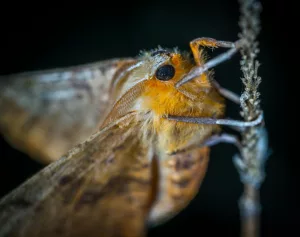When we think about longevity in the natural world, ancient trees often come to mind. Some tree species have been known to live for thousands of years, defying the passage of time and standing as living witnesses to history. One of the key factors contributing to the longevity of certain tree species is their ability to adapt to their environment. Over millennia, these trees have developed strong resistance to diseases, pests, and environmental stressors, allowing them to thrive in harsh conditions.
The Secrets of Longevity in Ancient Trees
Genetic Prowess and Regeneration
Another fascinating aspect of long-lived trees is their genetic makeup. Many ancient tree species possess unique genetic traits that promote longevity and resilience. Through continuous regeneration and self-repair mechanisms, these trees are able to withstand the test of time. These genetic adaptations not only support the trees’ longevity but also enable them to respond effectively to changing environmental conditions. The ability to regenerate and repair themselves ensures that these trees can recover from damage and persist for centuries.
Let’s consider the example of the Bristlecone Pine, often cited as one of the oldest living trees on Earth. These trees thrive in the harsh conditions of the White Mountains in California, where they endure cold temperatures, strong winds, and poor soil. Their dense, resinous wood is resistant to insects and decay, which, coupled with their genetic resilience, allows them to live for over 5,000 years.
Slow Growth and Efficient Resource Use
Moreover, the slow growth rate of some long-lived trees plays a crucial role in their remarkable lifespan. By conserving energy and utilizing resources efficiently, these trees allocate their resources strategically, ensuring long-term survival. The slow growth of these trees allows them to develop dense, durable wood that enhances their resilience to external threats. This slow and steady approach to growth enables them to withstand environmental challenges and live for thousands of years.
In the case of the Olive tree, known for its longevity, slow growth is a key factor. Olive trees can take decades to produce fruit, but their slow growth and ability to thrive in arid, rocky environments contribute to their long lifespan. Their ability to regenerate from their root systems even after the trunk has been damaged ensures they remain part of the landscape for centuries.
Environmental Conditions and Stability
The specific environmental conditions in which long-lived trees grow also contribute to their extraordinary lifespan. Habitats that provide stability, minimal disturbances, and optimal growing conditions enable these trees to flourish and endure for thousands of years. The availability of ample sunlight, water, and nutrients in their environment supports the trees’ growth and longevity. In stable habitats with consistent resources, these trees can focus on sustained growth and longevity without the constant pressure of resource scarcity.
Take the example of the Giant Sequoia, which thrives in the Sierra Nevada Mountains. These trees benefit from a specific climate where winters are wet, and summers are dry, which reduces the risk of fungal diseases. The thick bark of the Giant Sequoia is fire-resistant, protecting them from wildfires, while the deep root systems secure water from underground sources, ensuring their survival through dry spells.
Additional Factors Contributing to Tree Longevity
Symbiotic Relationships
Trees often form symbiotic relationships with other organisms, which can enhance their longevity. Mycorrhizal fungi, for instance, form associations with tree roots, aiding in nutrient absorption. This mutualistic relationship allows trees to access water and nutrients more efficiently, promoting health and longevity. Studies have shown that trees with a robust network of mycorrhizal fungi are better equipped to withstand environmental stressors.
Genetic Diversity and Resilience
Genetic diversity within a species can also contribute to the longevity of individual trees. A diverse genetic pool provides a wider range of traits that can help trees adapt to various challenges. For instance, trees with diverse genetics may be more resistant to diseases or better able to cope with climate fluctuations. In managed forests, promoting genetic diversity can be a strategy to enhance forest resilience and longevity.
Human Influence and Conservation Efforts
Human activities have a significant impact on tree longevity, both positive and negative. Deforestation and habitat destruction pose significant threats to ancient trees, but conservation efforts can help preserve these natural wonders. Initiatives such as protected areas, sustainable forestry practices, and reforestation projects aim to safeguard long-lived tree species. By understanding the conditions that allow these trees to thrive, conservationists can create environments that support their continued survival.
Lessons from Long-Lived Trees
Adaptation and Resilience
The endurance of ancient trees serves as a testament to the power of adaptation and resilience. By studying these trees, scientists can gain insights into how species adapt to changing environments over long periods. This knowledge is crucial in the context of climate change, as it can inform strategies for preserving biodiversity and promoting ecosystem stability.
Practical Tips for Preserving Longevity
- Select Appropriate Species: When planting trees, choose species that are well-suited to the local environment. Native species are often more resilient and adapted to the local climate and soil conditions.
- Promote Healthy Soil: Ensure that trees have access to healthy, nutrient-rich soil. Practices such as mulching, composting, and reducing soil compaction can enhance soil health and support tree growth.
- Encourage Biodiversity: Plant a mix of tree species to promote genetic diversity and reduce the risk of disease. A diverse tree population is more resilient to environmental stressors and can support a wider range of wildlife.
- Implement Water Management: Ensure trees have adequate access to water, particularly during dry spells. Water conservation practices, such as rainwater harvesting and drip irrigation, can be beneficial.
- Protect Against Pests and Diseases: Monitor trees for signs of pests and diseases and take proactive measures to address any issues. Natural pest control methods and integrated pest management strategies can help maintain tree health.
- Support Conservation Efforts: Get involved in local conservation projects and support initiatives aimed at preserving long-lived tree species. Community involvement can make a significant difference in protecting these natural treasures.
The Future of Ancient Trees
Challenges and Opportunities
As we move forward, the survival of ancient trees faces both challenges and opportunities. Climate change, deforestation, and urbanization threaten their existence, but increased awareness and conservation efforts offer hope. By understanding the factors that contribute to tree longevity, we can work to preserve these remarkable organisms for future generations.
The Role of Technology
Advancements in technology are providing new tools for studying and preserving ancient trees. Drones, remote sensing, and genetic analysis offer insights into tree health, growth patterns, and genetic diversity. These technologies can aid in monitoring tree populations and identifying threats, allowing for timely interventions to protect long-lived trees.
Engaging Communities
Raising awareness about the importance of ancient trees and involving local communities in conservation efforts is crucial. Educational programs, tree-planting initiatives, and community workshops can foster a sense of stewardship and encourage collective action to preserve these natural wonders.
Final Thoughts
Understanding the mysteries behind the exceptional lifespan of these trees offers valuable insights into the resilience and complexity of the natural world. By studying these long-lived trees, scientists gain invaluable knowledge about adaptation, genetic resilience, and the interconnectedness of living organisms with their environment. The endurance of ancient trees serves as a reminder of the intricate relationship between nature and time, highlighting the awe-inspiring beauty and resilience of the natural world. Through our efforts to protect and preserve these ancient giants, we not only safeguard a vital part of our natural heritage but also learn important lessons about sustainability and resilience in an ever-changing world.



